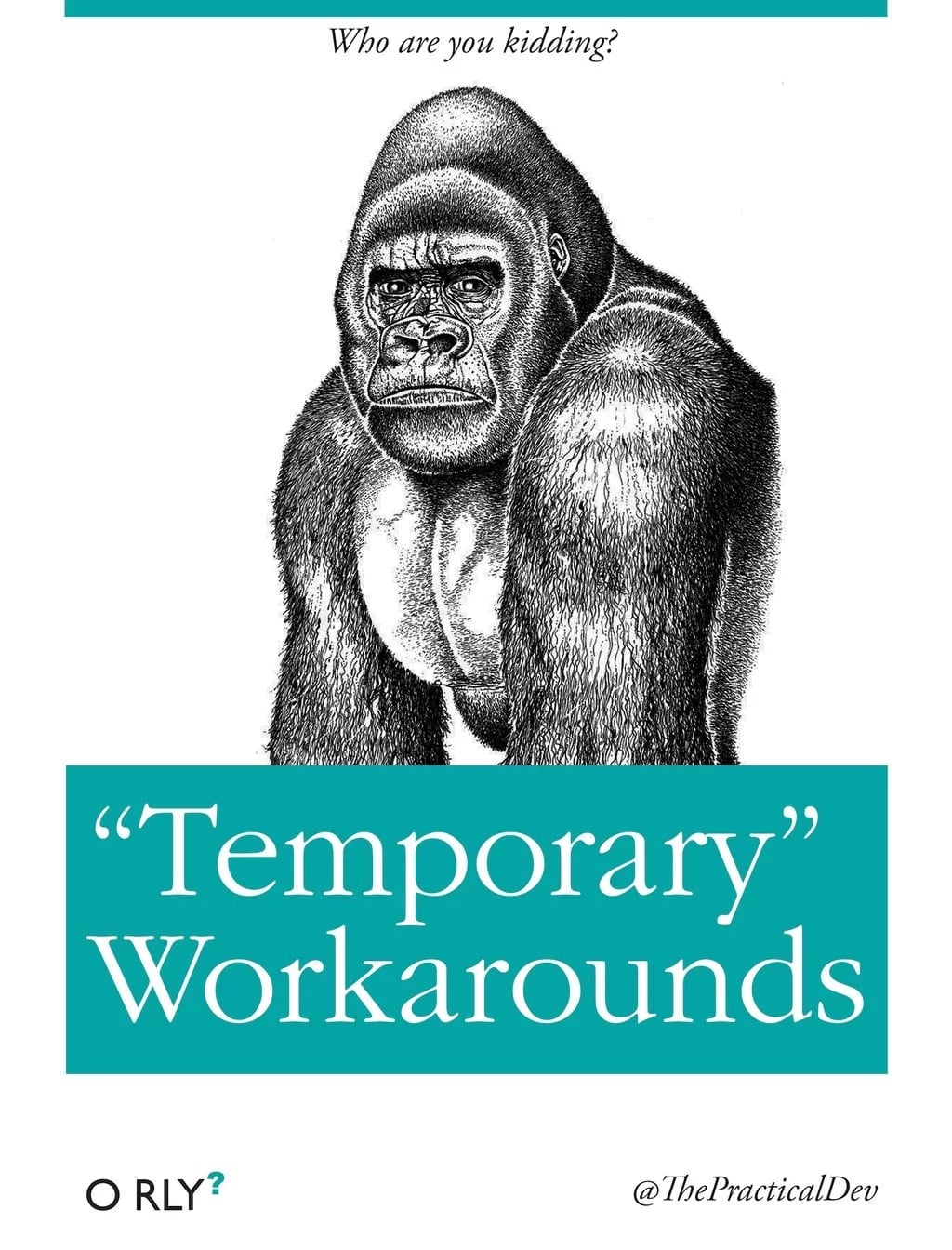
In the ever-evolving landscape of Codetown, where the architecture of software systems is as complex and varied as the city’s own skyline, there emerged a ubiquitous practice known to every developer, yet seldom acknowledged in the bright light of day: "Temporary Workarounds." This phenomenon, characterized by quick fixes and makeshift solutions, became the silent confession of the development community, encapsulated by the wry acknowledgment, "Who are you kidding?"
Central to our tale is Avery, a developer whose journey through the byways of code and the alleyways of software architecture had been marked by both triumphs and trials. Avery, like many before them, often found themselves navigating the tight deadlines and shifting priorities that are the hallmark of Codetown’s fast-paced environment.
The inception of "Temporary Workarounds" in Avery’s projects began as whispered strategies in the face of looming deadlines. These were not the elegant solutions dreamed of in the quiet of planning sessions, but rather the hastily constructed bridges over digital chasms, built with the promise of future refinement. "Just for now," Avery would mutter, weaving these workarounds into the fabric of their code with the intention of revisiting them "someday."
As projects piled upon projects, the landscape of Avery’s codebase began to resemble a cityscape in which temporary structures became permanent fixtures, each workaround a monument to the pressures and compromises of development life. The irony of the term "temporary" became a source of gallows humor among Avery and their peers, a collective acknowledgment of the aspirational yet elusive nature of these quick fixes.
The turning point came when Avery, tasked with scaling a particularly critical application, encountered a labyrinth of workarounds that had, over time, become entrenched in the system’s architecture. The realization dawned that these temporary solutions had not only compromised the integrity of the application but had also obscured the path to genuine improvement. "Who are you kidding?" echoed in Avery’s mind, a challenge to confront the reality of the situation.
Emboldened by this epiphany, Avery embarked on a quest to untangle the web of workarounds, a journey that demanded not just technical skill, but also a reevaluation of the development culture that had given rise to them. Avery championed the cause of sustainable coding practices, advocating for the allocation of time and resources to address and refactor these makeshift solutions.
The transformation was neither quick nor easy, but through Avery’s leadership, a new ethos began to take root in Codetown. "Temporary Workarounds" evolved from a testament to expedience to a reminder of the importance of craftsmanship in coding. Avery’s efforts inspired a shift towards more thoughtful, deliberate problem-solving practices, emphasizing the value of long-term solutions over the allure of the immediate fix.
In the annals of Codetown’s history, "Temporary Workarounds: Who are you kidding?" stands as a parable of growth and wisdom, a narrative that challenges the status quo and champions the pursuit of excellence in the craft of software development. Avery’s story serves as a beacon to future generations of developers, a reminder that the temporary is often the enemy of the good, and that true progress lies in the courage to seek out lasting solutions, even in the face of the relentless pressures of the present.